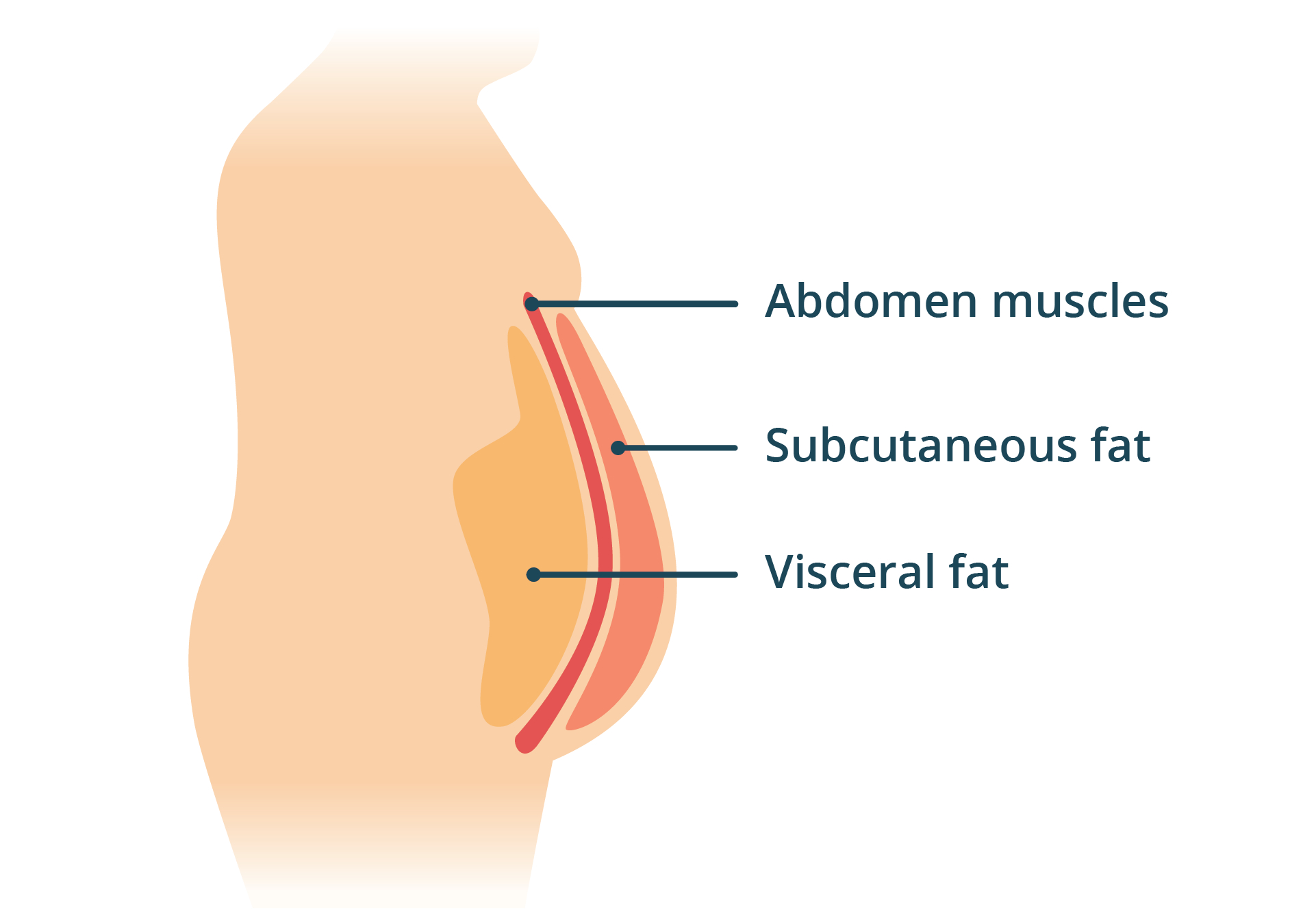Visceral Fat: The Hidden Health Risk
Visceral fat, often called “active fat,” is a type of body fat stored deep within the abdominal cavity, surrounding vital organs like the liver, stomach, and intestines. Unlike subcutaneous fat, which lies just beneath the skin and is visible and palpable, visceral fat resides unseen. Also known as ‘toxic’ fat, it makes chemicals and hormones that can be more damaging to the body than subcutaneous fat.

Podcast: Our AI Experts Discuss Visceral Fat
The Key Take Aways
- it is dangerous! visceral fat is particularly problematic.
- it releases more of these toxic substances than subcutaneous fat,
- increasing the risk of serious health problems.
- Visceral fat is stored when you eat too many calories and don’t do enough physical activity,
- contributing to insulin resistance and increasing the likelihood of type 2 diabetes.
- It also elevates blood pressure and bad cholesterol (LDL), raising the risk of heart disease and stroke.
- Furthermore, visceral fat has been associated with certain types of cancer, metabolic syndrome, and even non-alcoholic fatty liver disease.
The following factors increase the risk of visceral fat storage:
- Being male
- Being a female who has reached menopause
- Having a low birth weight
- Having a genetic predisposition
- Excessive alcohol consumption
- lifestyle choices such as diet and exercise remain crucial.
- A diet high in processed foods, sugary drinks, and saturated fats accelerates visceral fat accumulation,
- while regular physical activity helps reduce it.
Lets Begin to Fix It : Click the Test tab to review analysis options. Then consider adding a highly personalised Visceral Fat improvement Plan to your Holistic Wellness Program.